Mythology, as a system of traditional stories, beliefs, and symbols, plays an essential role in the formation and understanding of art across cultures. Myths are not only narratives about gods, heroes, and the natural world but also frameworks that provide meaning, shape identities, and guide societies through moral and existential questions. Artists, throughout history, have drawn upon these mythologies to express cultural values, comment on the human experience, and create visual and performative representations that transcend their specific time and place. Mythology's pervasive influence on art demonstrates its continuing importance in connecting generations and civilizations.
In ancient cultures, art was not only a form of expression but also a means of conveying spiritual truths, cultural values, and cosmological understandings. In ancient Egypt, Greece, and Rome, art depicted deities, mythical figures, and the supernatural realm to communicate ideas about the world and the afterlife.
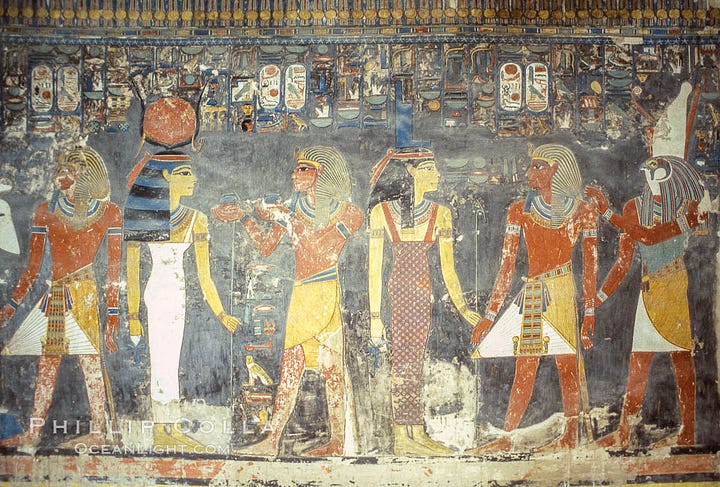
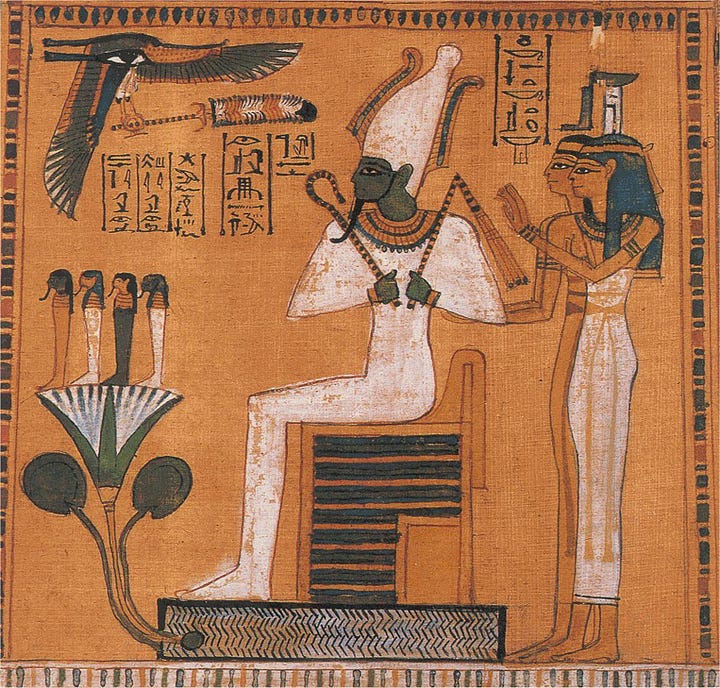
The ancient Egyptians used mythological figures extensively in their art, which was primarily tied to religious practices and the afterlife. Egyptian art often depicted gods such as Ra, Osiris, Isis, and Horus, each of whom symbolized different aspects of the universe, from the sun to resurrection. These figures were represented in temples, tombs, and statues, where they played a central role in rituals that ensured the protection of the deceased and their journey to the afterlife (Tyldesley 94). The murals inside the tombs, such as those in the Valley of the Kings, often depicted scenes from the myth of Osiris, which was fundamental to Egyptian beliefs about death and rebirth. These artistic representations of mythology functioned as both a way of honoring the gods and a ritual tool to facilitate a safe transition to the afterlife (Taylor 112).
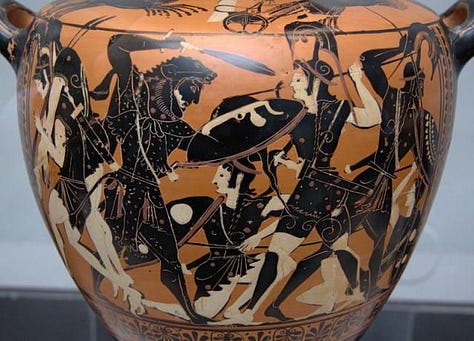
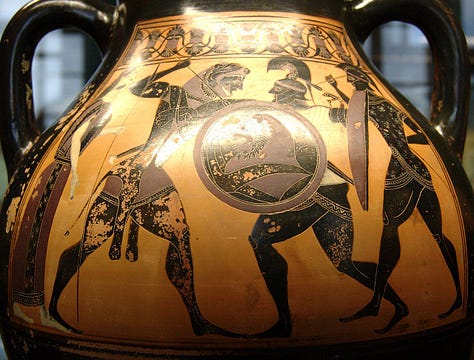

Greek mythology had an equally significant impact on the visual arts, where gods, heroes, and mythological creatures were central subjects. Greek vases, often painted with scenes from myths such as the Labors of Heracles or the Trojan War, were a means of narrating mythological stories and imparting moral lessons. The depiction of gods like Zeus, Athena, and Apollo reflected the Greek understanding of the human condition, the divine, and the cosmos. The vases, especially those made by renowned artists such as Exekias and Euphronios, not only functioned as everyday objects but also conveyed cultural values such as courage, honor, and justice (Boardman 132). Mythology also played a role in Greek sculpture, as seen in the works of Phidias and Myron, whose sculptures of gods and mythological figures embodied both the ideals of Greek physical beauty and the divine qualities associated with their subjects (Havelock 76).
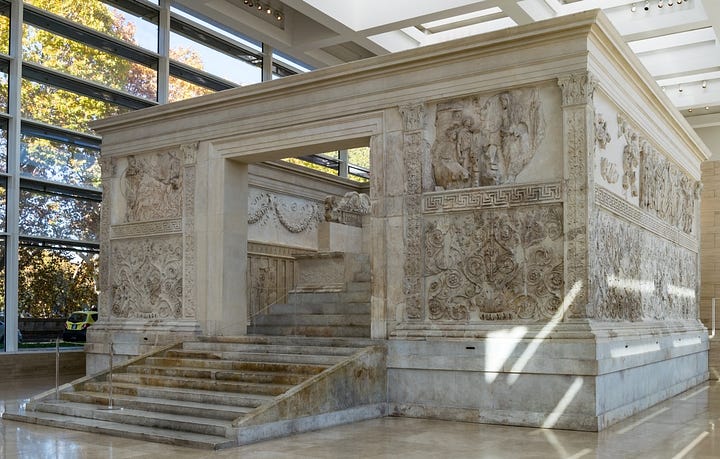
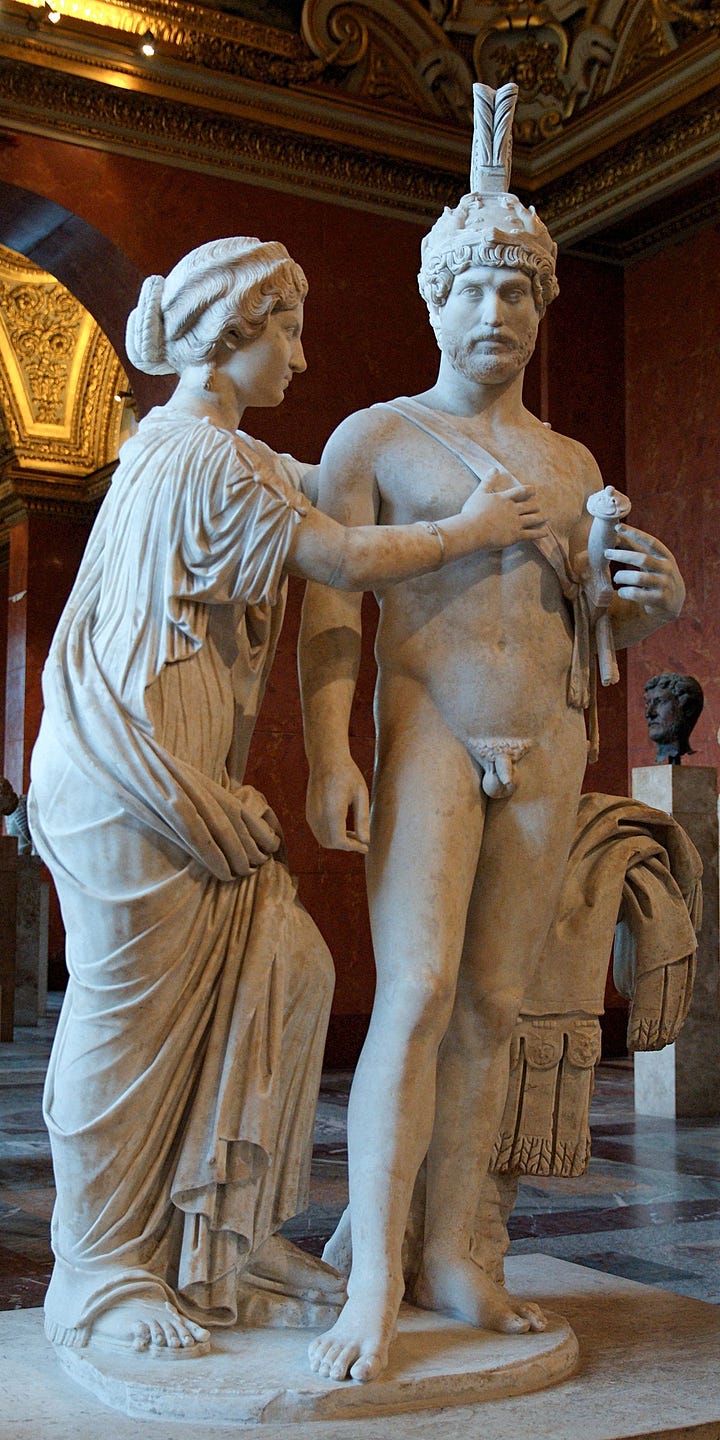
The influence of Greek mythology extended into Roman art, though Roman artists often used mythology to glorify their emperors and celebrate military victories. The Ara Pacis Augustae, an altar in Rome, integrates mythological themes to emphasize the peace and prosperity brought by Emperor Augustus. The inclusion of mythological scenes alongside historical depictions reflected the Romans' belief that their civilization was divinely ordained and blessed by the gods (Zanker 61). Roman mosaic works and sculptures frequently depicted mythological tales, with figures such as Venus and Mars being used to convey not only divine characteristics but also political and social ideals (Beard 89).
Across non-Western cultures, mythology is similarly embedded in the visual and performative arts, where gods, spirits, and ancestors serve as central subjects that embody societal values, cosmological beliefs, and spiritual teachings. In Africa, Asia, and the Americas, mythology provides not only the narrative foundation for artistic creation but also a means of communicating with the divine and honoring ancestral spirits.
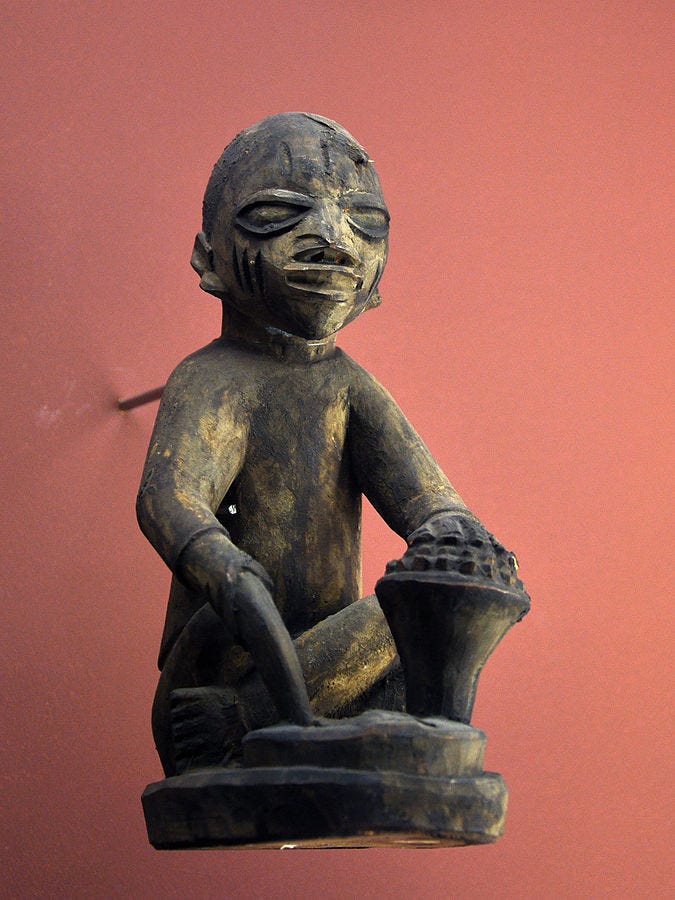
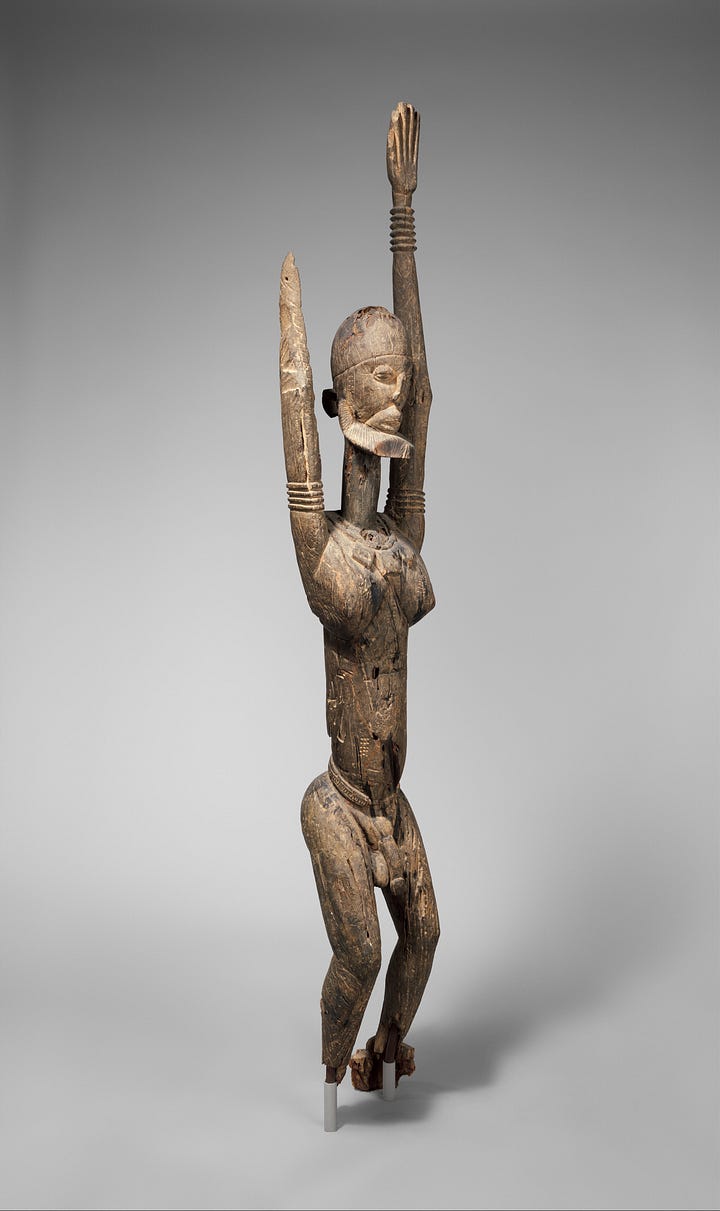
In many African cultures, mythology is conveyed through sculpture, masks, and ceremonial art. For example, the Yoruba people of West Africa have a rich pantheon of deities known as orishas, each of whom is associated with natural forces, human traits, and specific aspects of life. Artists create sculptures and masks to represent these deities, often used in religious ceremonies to call upon their power for healing, fertility, and protection. The Yoruba's belief in the interconnectedness between the physical world and the spiritual realm is mirrored in the artistry of these figures, which are considered conduits for divine presence (Drewal 48). The Dogon people of Mali also incorporate mythological themes into their art, with sculptures and paintings often depicting Nommo, ancestral spirits central to their creation myth.
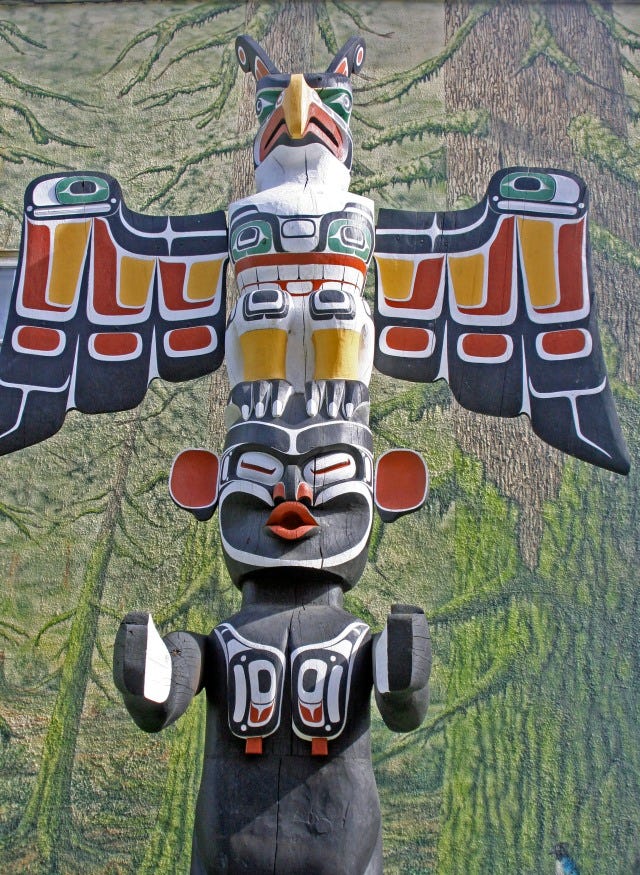
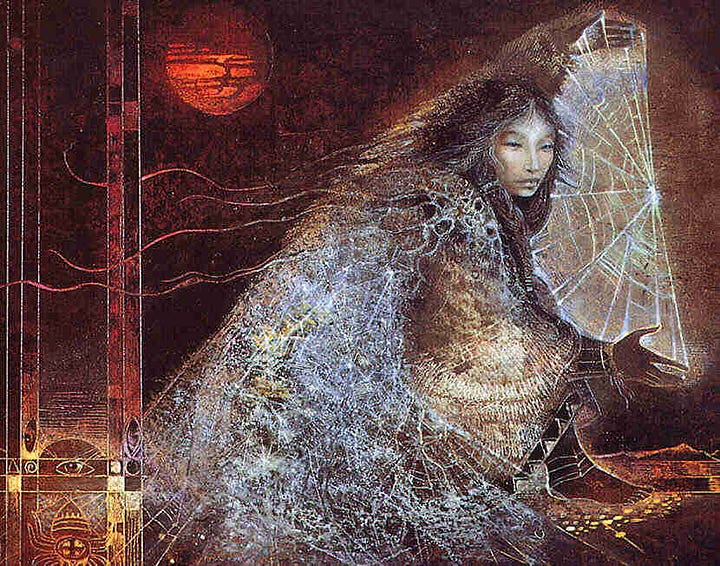
In Native American cultures, mythological stories are crucial for understanding the relationship between humans, the natural world, and the spiritual realm. Mythological figures such as the Coyote (a trickster figure) and Thunderbird (a symbol of power and protection) appear in ledger art, totem poles, and ceremonial objects. These works are not just artistic representations but are integral to religious and social practices. Native American artists often use these symbols to convey the interconnectedness of all living beings, emphasizing the cyclical nature of life, death, and renewal (Samuels 139). The Navajo myth of Spider Woman, for example, is reflected in the weaving traditions, where the creation of complex geometric patterns is seen as a manifestation of Spider Woman’s divine creativity (McNabb 56).
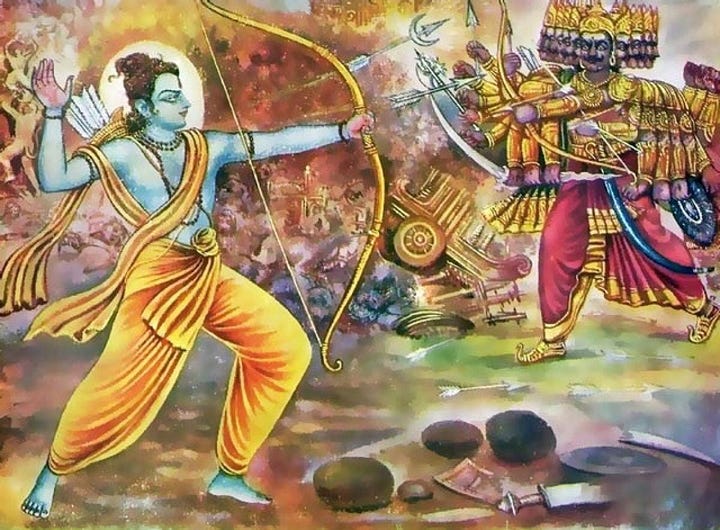
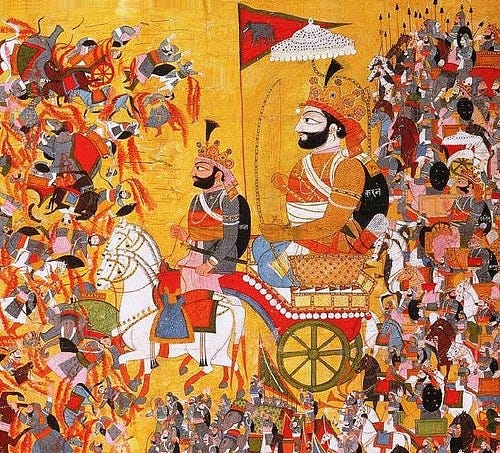
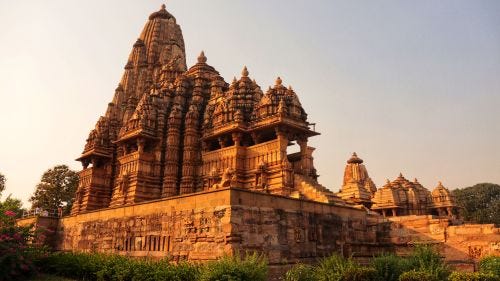
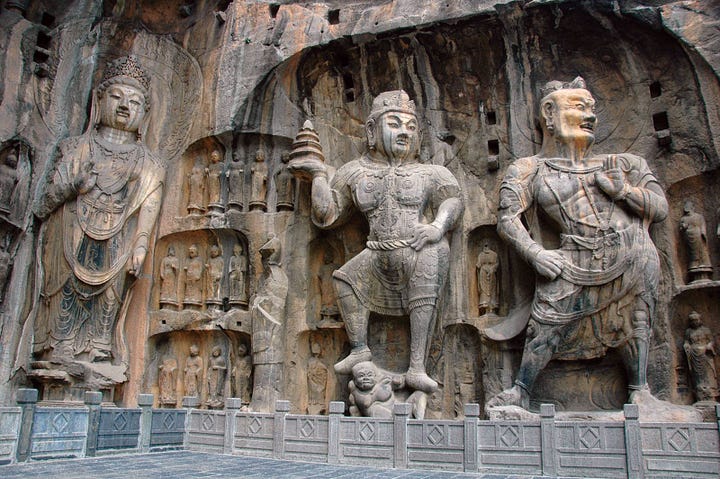
In India, mythological stories from the Ramayana and Mahabharata have been visualized in various forms of art, from sculptures to temple murals. Indian deities such as Vishnu, Shiva, and Durga represent cosmic principles and are depicted in art to explain the cycles of creation, destruction, and rebirth. The temples of Khajuraho and Angkor Wat contain some of the most intricate depictions of these stories, carved into the stone with a sense of spiritual and artistic devotion (Kinsley 172). Chinese art, too, is deeply influenced by mythology, with the Classic of Mountains and Seas offering a rich collection of mythical creatures and divine beings that have inspired generations of Chinese artists. The famous Longmen Grottoes contain sculptures of Buddhist deities and figures from Chinese mythology, reflecting both spiritual beliefs and the harmony between heaven and earth (Chang 210).

Though contemporary art often moves away from literal representations of mythology, the themes, archetypes, and symbols inherent in mythological narratives continue to inform and inspire modern and postmodern art. In Surrealism, artists such as Salvador Dalí used mythological imagery to explore the unconscious mind and challenge conventional understandings of reality. Dalí’s "The Metamorphosis of Narcissus" (1937) uses the myth of Narcissus as a metaphor for self-obsession and psychological fragmentation (Dalí 44).

Frida Kahlo, in her self-portraits, often invoked Mexican mythological figures to communicate personal pain and to navigate cultural identity. Her depiction of the Aztec goddess Coatlicue in her paintings is not only a reference to Mexican heritage but also a way to explore the intersection of gender, identity, and suffering (Harrington 91). In postmodern art, figures like Cindy Sherman have used mythological archetypes to critique traditional gender roles and the representation of women in art. Through her photographic works, Sherman embodies mythological and historical figures to expose the constructed nature of these identities (Sherman 58).

The legacy of mythology in contemporary art also extends to digital media and performance art, where mythology provides a rich vocabulary for exploring identity, politics, and social dynamics. For example, the work of Kara Walker often invokes mythological and historical narratives to address themes of race, power, and oppression, drawing on both African American history and broader mythological motifs (Walker's "A Subtlety," 2014). Walker’s work, much like the gods and heroes of myth, challenges and reinterprets history in ways that are socially and politically charged.
Mythology has played a crucial role in the development of art across cultures, providing artists with a rich reservoir of symbols, narratives, and archetypes to express cultural values, explore universal themes, and navigate the human experience. From the monumental sculptures of ancient Egypt to the contemporary works of artists like Kara Walker and Cindy Sherman, mythology continues to inform the creation of art, offering both a means of connection to the past and a vehicle for critique and transformation in the present. The enduring power of myth in art underscores the universal desire to make sense of the world, find meaning in existence, and communicate the complexities of life, death, and transcendence.
References:
Beard, Mary. The Roman Triumph. Harvard University Press, 2007.
Boardman, John. The History of Greek Vases. Thames & Hudson, 1974.
Chang, Kwang-chih. The Arts of China. Yale University Press, 1994.
Dalí, Salvador. The Secret Life of Salvador Dalí. Dover
Publications, 1944.
Drewal, Henry John. Yoruba Ritual: Performers, Play, Agency. Indiana University Press, 2008.
Harrington, Anne. Frida Kahlo: Her Photos and Paintings. Abbeville Press, 2013.
Havelock, Christine. The Art of Ancient Greece. Cambridge University Press, 2007.
Kinsley, David. Hindu Goddesses: Vision of the Divine Feminine in the Hindu Religious Tradition. University of California Press, 1998.
McNabb, Kimberly. The Art of the Navajo Weaving. U of Arizona Press, 2009.
Samuels, David. Native American Art: A Visual Anthology. Abrams, 2007.
Sherman, Cindy. Cindy Sherman: The Complete Untitled Film Stills. Museum of Modern Art, 2003.
Taylor, John H. Death and the Afterlife in Ancient Egypt. University of Chicago Press, 2001.
Tyldesley, Joyce. Hatchepsut: The Female Pharaoh. Viking, 1994.
Zanker, Paul. The Power of Images in the Age of Augustus. University of Michigan Press, 1988.




I live the way you move through time, impressively capturing how mythology is still having impact in contemporary art. It makes me think of Leonora Carrington’s work as well, creating its own mythology within itself while drawing fully from the archetypes of Jung.
Wonderful timing in this one after Demeter and Persephone of my last post 😉